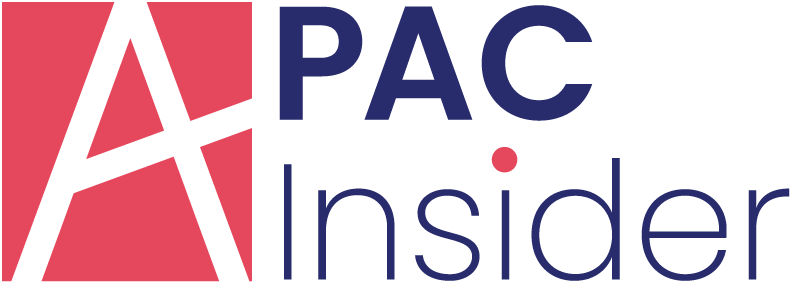
Implementing new technology is a core focus in the business world today, and it’s no wonder given the array of innovative options flooding the market on a continuous basis. But when we focus so heavily on technology, it can be easy to forget the importance of two other factors which are equally as important for business success: people and process.
It’s only by ensuring all three factors are aligned that companies can achieve optimal success and realise the associated cost-savings.
The concept of people, process and technology being intrinsically linked isn’t a new idea. In fact, it’s been known as the ‘golden triangle’ for decades, and the subject was further popularised by computer security specialist Bruce Schneier in the 1990s.
But with the rapid development of new technology seeing the rate of change within businesses accelerating, it’s important that business leaders ensure people and processes remain aligned otherwise roadblocks and challenges are bound to occur.
With a much-needed goal of operating efficiently and saving vital resources, given the backdrop of continued global economic struggles, it’s easy to see why businesses are drawn in by the long-term cost savings promised through the implementation of new technology.
But by treating tech as a ‘silver bullet’ that will solve any problem, business leaders can quickly fall into the trap of ignoring the rest of the golden triangle. Not only does this mean the technology implemented may not deliver – because there’s been no consideration of how it fits in with existing processes and people – the company may even lose out through the costs associated with time, effort and money spent, not to mention potential loss of staff.
That’s because when we alter one of the three aspects of the golden triangle, it always impacts the other two. New technology may require new processes and certainly requires staff training; an increase in team numbers impacts how tech and processes are utilised and any new processes need to align with the technology in place and also need to be used effectively by people.
But when there is a clear focus on all three in tandem, that’s when optimal results can be achieved, all while reducing costs and increasing revenue.
Saving time equals saving money
There is no doubt that people are the biggest asset within a company, but they are also usually the largest cost: typical businesses spend between 15% and 30% of their gross revenue on payroll, although this can be nearer 50% within particularly labour-intensive sectors (NetSuite).
With that in mind, it’s important to ensure that the maximum amount of people’s time is spent on high-value tasks, and lower-value or repetitive tasks are automated where feasible by improving processes or utilising technology.
As well as maximising the revenue generated by the people within the business, this automation also reduces the risk of human error, which in turn diminishes down-time and the time spent investigating what’s gone wrong or in working around the error.
A consistent approach
When businesses have great processes and efficient technology in place, that may seem like a job well done. But it’s crucial to consider the third element of the Golden Triangle: people.
If your staff aren’t confident using the technology and processes you have implemented, or aren’t using them consistently across teams and departments, then in reality there could be a different outcome depending on which person or team completes a certain task. Discrepancies arising from differing processes, or different ways of working, can absolutely cost time and money – undermining the savings you hoped to achieve when implementing these solutions.
It’s not only a case of considering current staff: when new hires join the company, it’s much easier if they are consistently taught the correct processes, and the best way to utilise the technology they have to hand. This not only ensures they can begin using them effectively much more quickly, it also reduces the issues which result from inconsistency – which cost time and money to resolve.
Better to improve than get rid
There tend to be two extremes involved once it’s been observed that processes aren’t working the way they should: either to hold on to the existing solutions and keep using manual work-arounds for the problems in a bid to save money, or to get rid of them and replace them with entirely new systems.
It’s easy to see why getting rid of existing processes can be off-putting considering the short-term costs involved (around 4% of a company’s revenue is spent on technology on average – Statista). However, rushing to erase anything not serving you well and replace it with completely new solutions isn’t always the answer. Instead, it can be far more effective to analyse how well existing systems are working and whether there is potential to improve them.
Smooth running processes save time and money, because people no longer need to spend a significant chunk of it trying to sort out problems or having to implement manual work-arounds due to the complications they present.
A great example of how improving existing processes can save time and money is the automation of invoicing: to manually process an invoice costs the average company up to £15. But companies who use automated processes typically spend £5 or less on each invoice (Levvel Research).
A saving of £10 may not sound significant, but when you multiply this across all of the invoices processed by a company in a year, it becomes a much more attractive saving. In fact, it’s estimated that procurement, supply chain and finance teams spend almost a third of their time dealing with inefficient paper-based or manual processes, which costs an average of £1.94 million a year per business (Ivalua).
When you look at the picture across the whole organisation, inefficient processes can cost a business between 20% and 30% of their annual revenue (IDC). So here we see the real impact of improving processes and technology upon not only people within the business but also your bottom line.
A golden opportunity
The golden triangle may not be a new concept, but it’s still just as relevant in today’s business world as it ever was. The processes and technology may have changed over the years, but the need to align them carefully with the way people work within your company is as pertinent as when the concept was first developed.
In today’s world – and no doubt in the future too – companies who ensure people, processes and technology are aligned by improving their existing systems to make them more cost-effective and impactful, have a golden opportunity not only to save costs, but to actually make more money, leaving them with more gold in the pot…



















